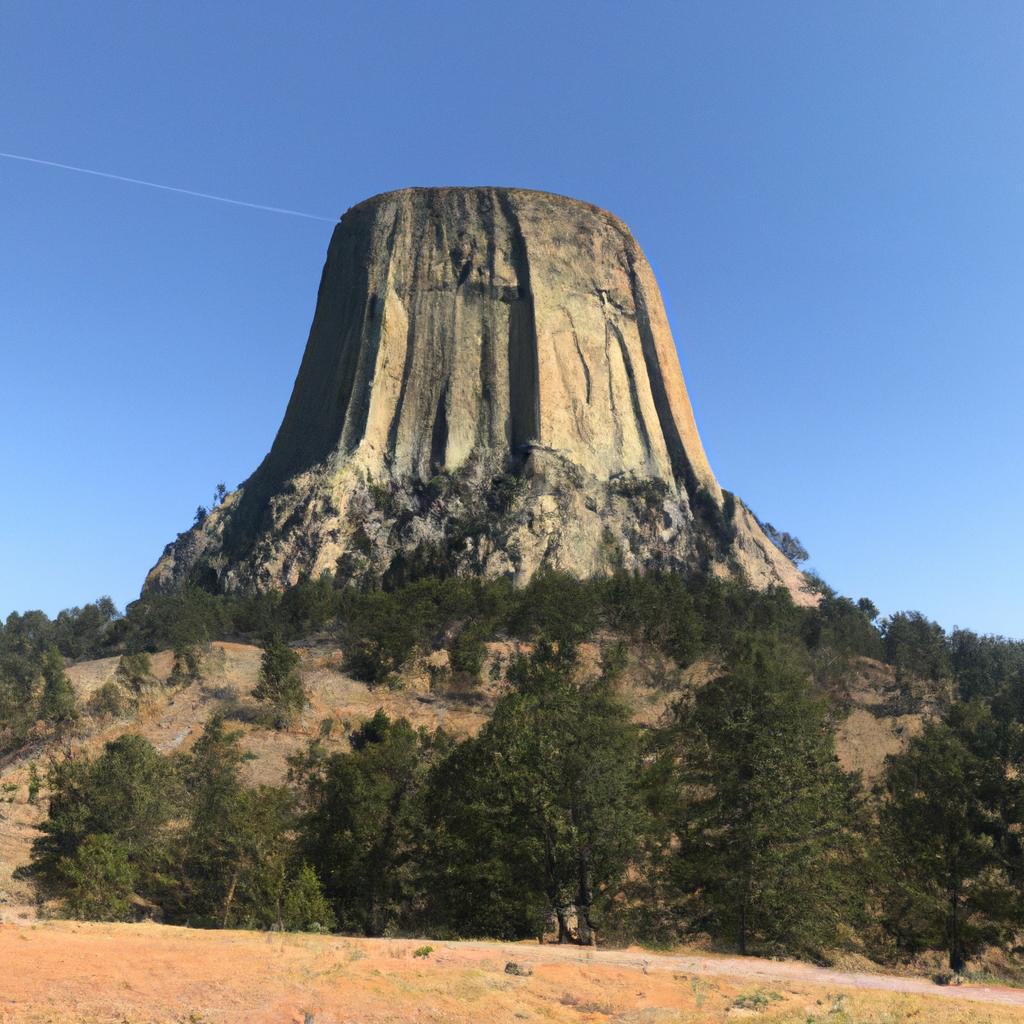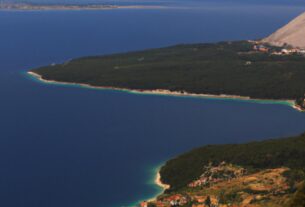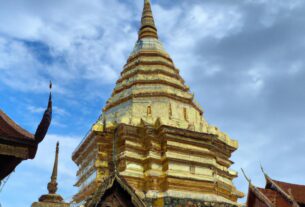Devils Tower, located in northeastern Wyoming, stands as a remarkable geological marvel that has captured the attention of scientists and visitors alike for centuries. This awe-inspiring landmark, rising nearly 1,300 feet above the surrounding landscape, boasts a unique structure and cultural significance that make it a sought-after destination for outdoor enthusiasts and spiritual seekers.
Preserving natural wonders like Devils Tower is crucial for maintaining the beauty and diversity of our planet. These wonders not only offer recreational opportunities but also serve as a powerful reminder of our connection to nature. Unfortunately, many natural landmarks across the globe are currently under threat due to climate change, pollution, and human activity. Therefore, it is paramount to protect and conserve these treasures to inspire future generations.
Geology of Devils Tower
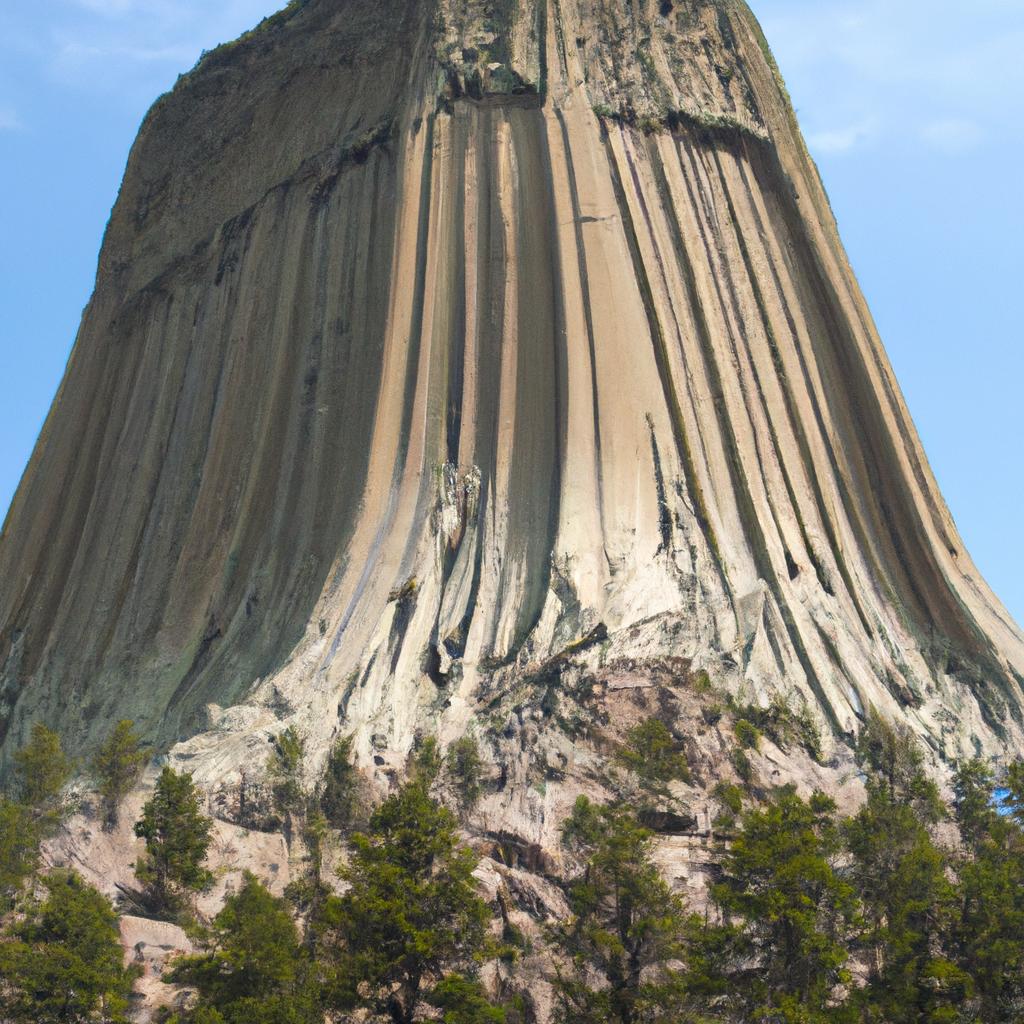
Formation of Devils Tower and its unique structure
Around 50 million years ago, during the Eocene epoch, Devils Tower, also known as Bear Lodge Butte, emerged through volcanic activity. It is a volcanic plug, an igneous intrusion that solidifies within the vent of a volcano. Over time, erosion gradually exposed the rock, resulting in the striking tower we see today.
What truly sets Devils Tower apart is its columnar jointing, a consequence of the way the magma cooled. As the lava cooled and contracted, it cracked into polygonal columns, predominantly hexagonal but occasionally pentagonal or heptagonal. These vertical columns form a remarkable pattern visible even from a distance.
Characteristics of the rock and surrounding landscape
Devils Tower is composed of phonolite porphyry, a rare type of volcanic rock exclusive to this area. The rock appears light gray, and its black vertical columns starkly contrast against the surrounding landscape. The area encompassing the tower features a blend of forests and grasslands, creating a diverse ecosystem that supports various wildlife.
The geology of Devils Tower has captivated scientists for years and continues to be a subject of study. Visitors can explore the tower’s geology by hiking or rock climbing, and the nearby visitor center provides valuable insights into the formation of this unique wonder.
Cultural Significance
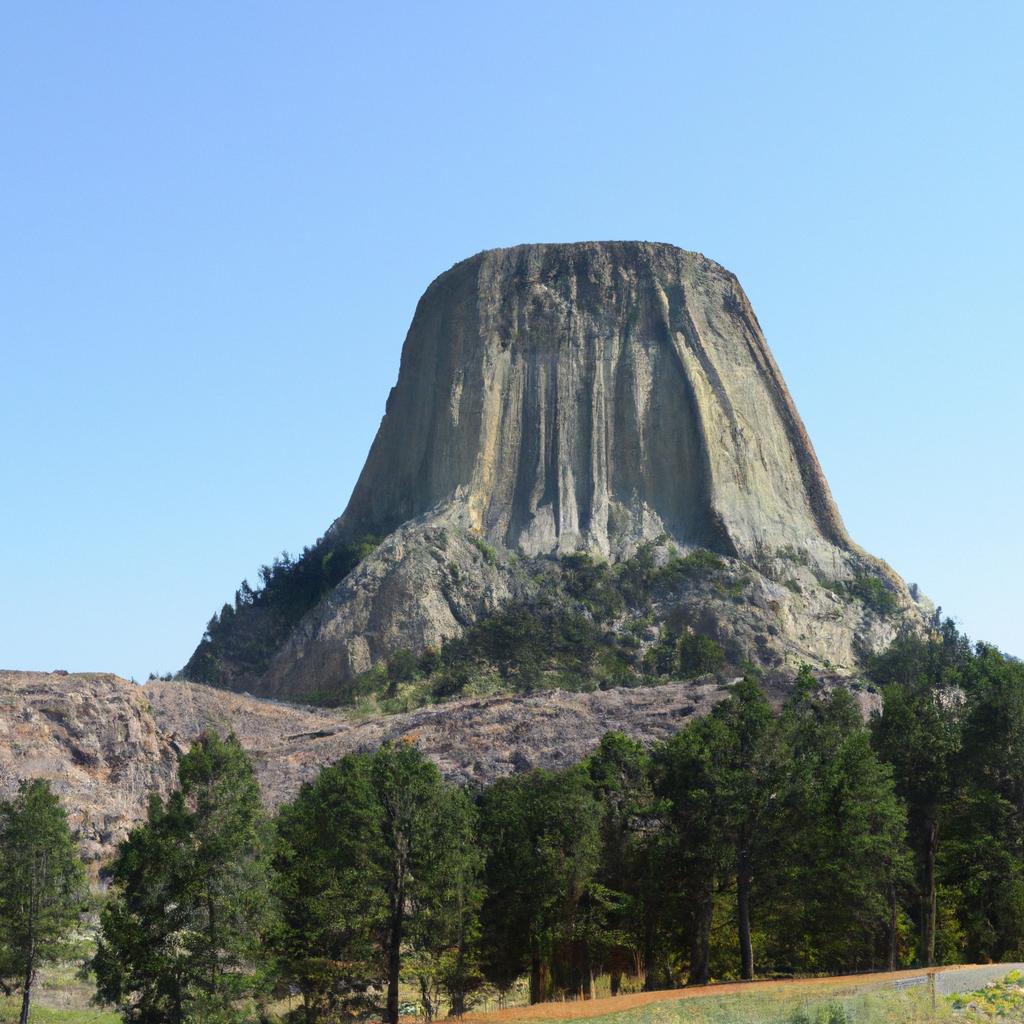
Devils Tower holds immense cultural significance for numerous Native American tribes, including the Lakota, Cheyenne, Crow, and Kiowa. These tribes have long considered the site a place of profound spiritual power, with each tribe having its own stories and legends associated with it.
Importance of Devils Tower to Native American tribes
For many Native American tribes, Devils Tower represents a sacred site where vital ceremonies and rituals take place. The Lakota, for instance, recount a legend of a young girl who sought refuge from a pursuing bear by climbing to the top of Devils Tower. The bear desperately clawed at the tower’s sides, leaving visible grooves that endure to this day. The Lakota believe that the tower possesses healing properties and often engage in vision quests and other ceremonies there.
Legends and stories associated with Devils Tower
Devils Tower is surrounded by a multitude of stories and legends, with each tribe offering its own interpretation of its significance. Some view it as a dwelling place for spirits, while others perceive it as a symbol of strength and resilience. One of the most renowned legends recounts the tale of the seven sisters, seven Indian maidens pursued by a colossal bear. Seeking assistance from the Great Spirit, they were lifted to the tower’s summit, where they transformed into the Pleiades constellation.
Current efforts to honor and respect Native American cultures at Devils Tower
In recent years, a growing movement has emerged to honor and respect Native American cultures at Devils Tower. The National Park Service has collaborated closely with tribal leaders to develop programs and initiatives that celebrate the tower’s cultural significance. Visitors can participate in ranger-led programs that delve into the history and traditions of the tribes residing in the area. Additionally, the park has implemented policies that encourage visitors to show reverence for tribal customs and treat the site with utmost respect.
In summary, Devils Tower stands as a significant cultural site that holds deep meaning for many Native American tribes. It serves as a testament to the rich history and traditions of North America’s indigenous peoples, symbolizing their perseverance and fortitude.
Wildlife and Ecology
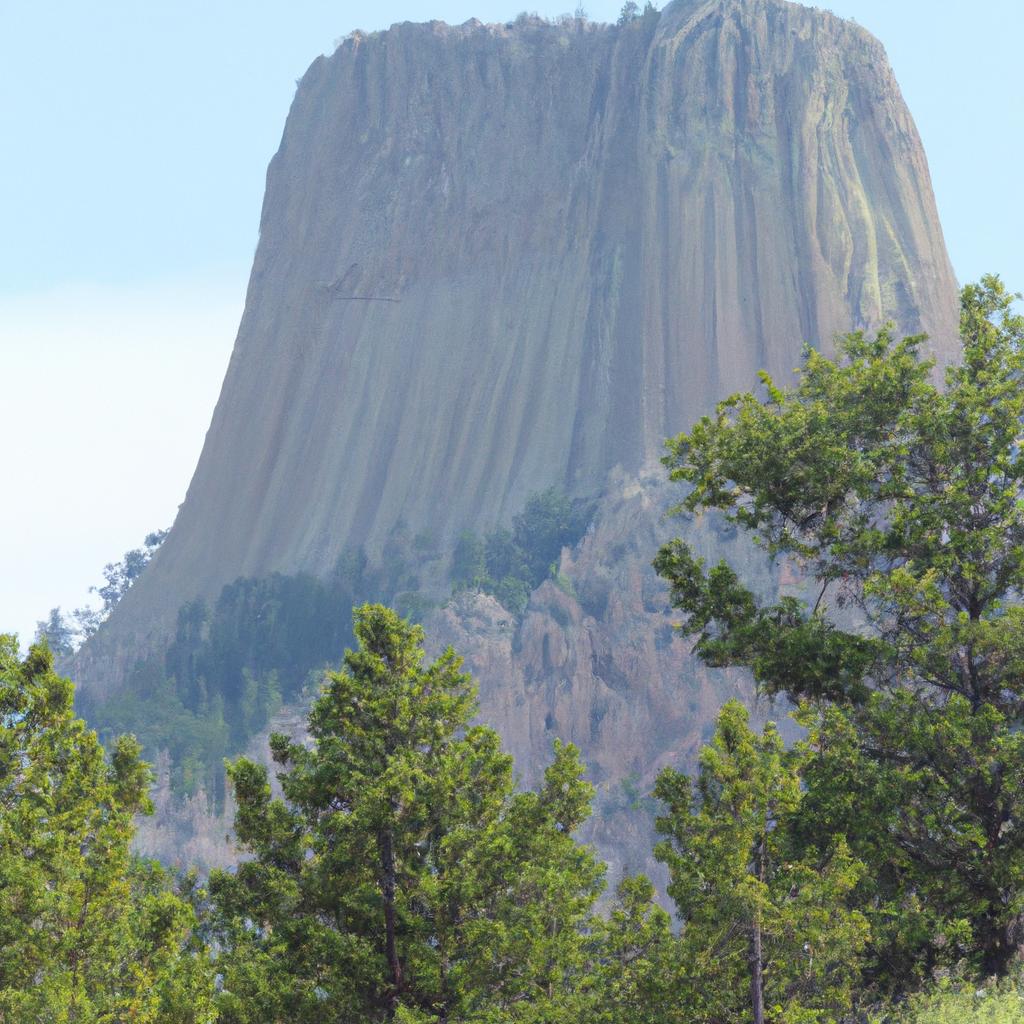
Devils Tower not only captivates with its natural wonder but also provides a habitat for a wide array of plant and animal species. The surrounding region encompasses forests, grasslands, and wetlands, accommodating diverse wildlife. Visitors may come across deer, elk, coyotes, prairie dogs, and, if fortunate, even catch a glimpse of the rare black-footed ferret.
Nevertheless, increasing human activity poses a threat to the ecosystem surrounding Devils Tower. Pollution, habitat loss, and climate change endanger the wildlife and ecology of this area. Conservation efforts are essential in safeguarding this fragile ecosystem, ensuring the survival of the species that call it home.
Devils Tower National Monument, an organization dedicated to maintaining the park, collaborates with conservation organizations and local communities to protect and preserve the natural habitat. Various measures have been implemented, such as limiting access to certain areas and promoting responsible tourism, to minimize human impact on the environment.
Visitors to Devils Tower can also contribute to conservation efforts by staying on designated trails, properly disposing of trash, and treating wildlife with respect. These simple actions can make a significant difference in preserving the natural wonder of this area. By working together, we can ensure the continued thriving of the wildlife and ecology at Devils Tower for generations to come.
Recreation and Tourism
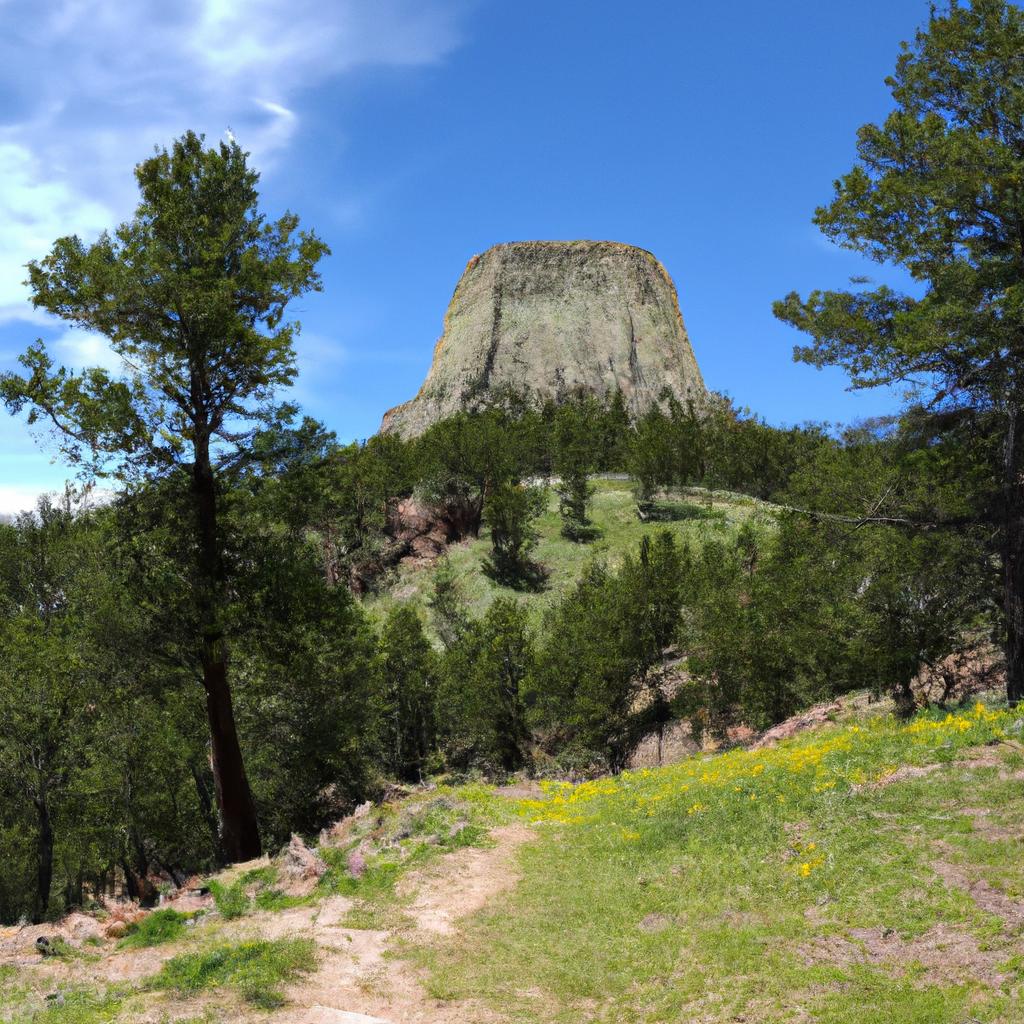
Activities and Attractions Available at Devils Tower
Devils Tower offers a plethora of outdoor activities and attractions that cater to visitors of all ages and interests. Hiking is one of the most popular activities, with several trails providing breathtaking views of the surrounding landscape and the tower itself. The Tower Trail, a 1.3-mile paved trail encircling the base of Devils Tower, offers an up-close perspective of the tower’s unique structure. For more seasoned hikers, the Red Beds Trail and Joyner Ridge Trail provide longer and more challenging routes.
Rock climbing is another favored pursuit at Devils Tower, with over 200 established climbing routes. Climbing permits are necessary, and climbers must adhere to specific regulations to protect the tower’s natural resources and cultural significance.
Other activities available include picnicking, camping, and wildlife watching. The park also offers ranger-led programs and educational opportunities for visitors to gain deeper insights into the tower’s geology and cultural importance.
Best Times to Visit and Tips for Travelers
Devils Tower remains open year-round, although late spring to early fall is deemed the optimal period due to milder weather and increased park amenities. Summer attracts the most visitors, with peak visitation occurring in July. To avoid crowds and secure a parking spot, it is advisable to arrive early.
For those seeking cooler temperatures and fewer crowds, autumn and winter provide a unique and tranquil experience. The park offers various winter activities like snowshoeing and cross-country skiing.
Visitors should come well-prepared with suitable clothing and gear for their chosen activities. The area’s high elevation and unpredictable weather patterns can result in rapid temperature drops, even during summer months. Additionally, it is recommended to bring sunscreen, insect repellent, and ample water.
Economic Impact of Tourism on the Local Community
Devils Tower not only attracts outdoor enthusiasts but also significantly contributes to the local economy. With over 500,000 annual visitors, the park generates millions of dollars in revenue for the surrounding communities. This revenue supports local businesses, job creation, and infrastructure development.
Moreover, Devils Tower National Monument plays a vital role in Wyoming’s tourism industry, which contributes over $3 billion annually, making it the state’s second-largest industry. The park’s popularity and economic impact underscore the importance of preserving natural wonders like Devils Tower for the benefit of future generations.
In conclusion, Devils Tower provides a rich tapestry of activities and attractions for visitors to enjoy while also bolstering the local economy. Preserving natural wonders such as Devils Tower is paramount to ensure their longevity and the economic benefits they offer.
Conclusion
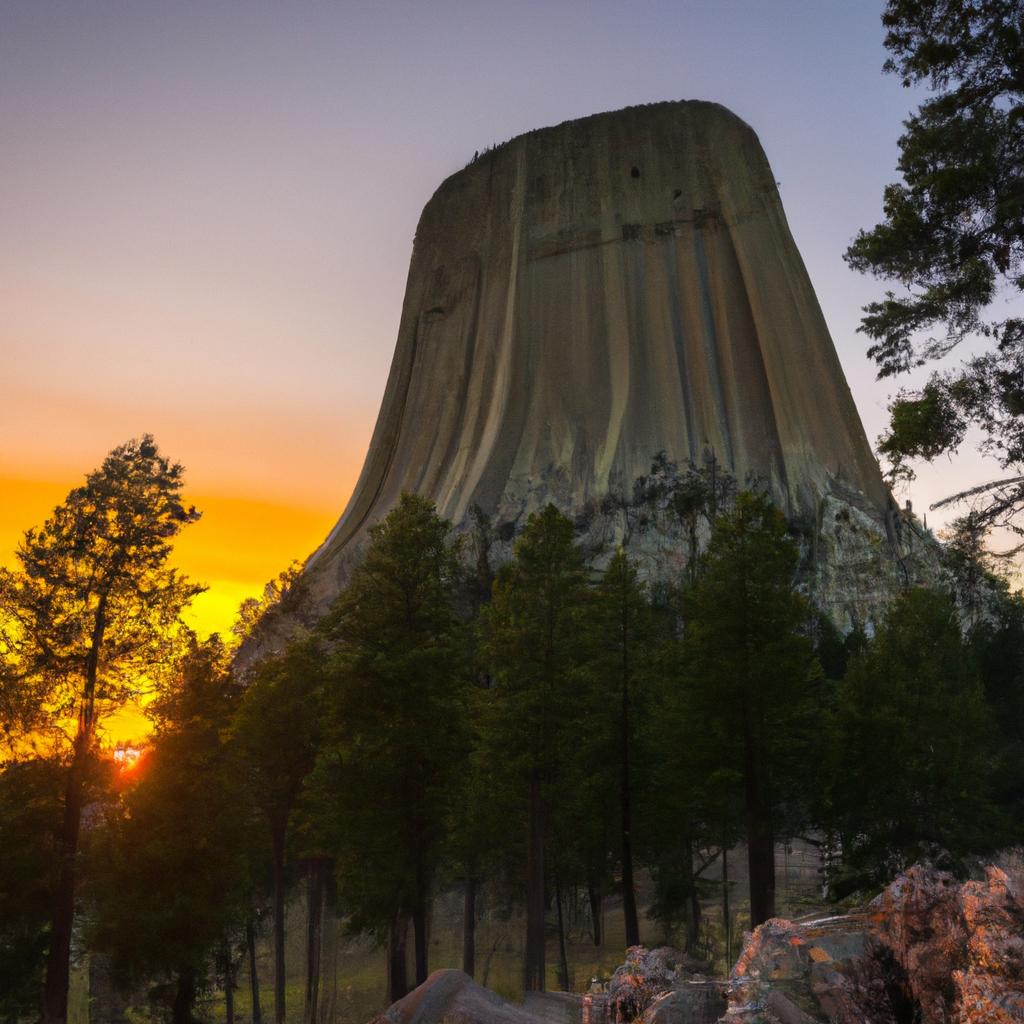
In summary, Devils Tower is not solely a geological wonder; it symbolizes cultural significance and spiritual importance. Visitors have the opportunity to connect with nature, learn about the tower’s history and legends, and appreciate the diverse ecosystem encompassing it.
Nevertheless, it is our responsibility to protect and preserve natural wonders like Devils Tower. Climate change, pollution, and human activity pose significant threats to these landmarks and the wildlife inhabiting them. By reducing our impact on the environment and supporting conservation efforts, we can ensure the perpetuation of these wonders for future generations to savor.
A visit to Devils Tower is an unforgettable experience that should not be missed. Whether you are a nature lover, an outdoor enthusiast, or a spiritual seeker, Devils Tower offers something truly exceptional. So, as you plan your trip to Wyoming, make sure to include Devils Tower in your itinerary.
Thank you for joining me on this journey to discover the beauty and significance of Devils Tower. Remember, TooLacks is committed to promoting the preservation of natural wonders and sharing the marvels of nature with our readers.
References:
- National Park Service. (2021). Devils Tower National Monument. Retrieved from https://www.nps.gov/deto/index.htm
- Wyoming Division of State Parks and Historic Sites. (2021). Devils Tower. Retrieved from https://wyoparks.wyo.gov/index.php/places-to-go/devils-tower/
